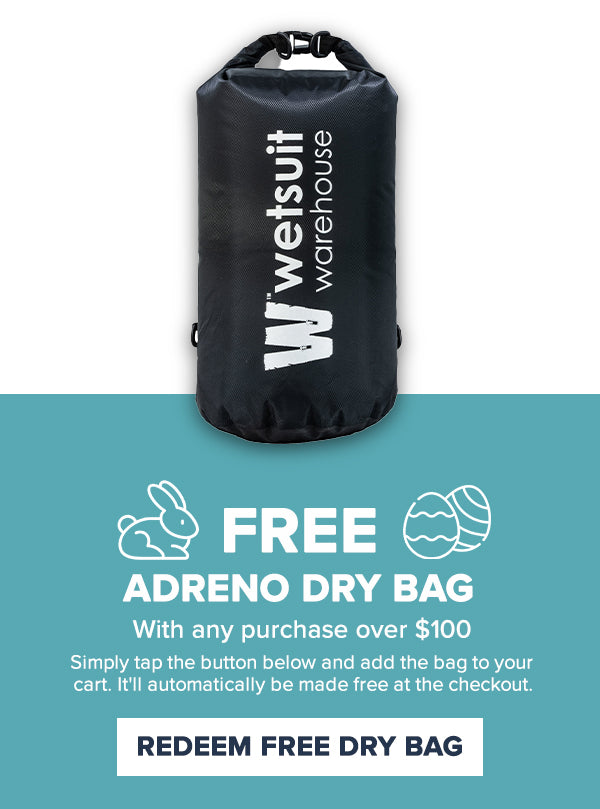Wetsuit Socks & Boots FAQ
1. Do I need to wear socks inside my wetsuit boots?
Water will seep inside your wetsuit boots, so if you are wearing socks they will get wet. However many people find it much more comfortable to wear socks inside wetsuit boots. Neoprene can rub if you are in the water a long time or are taking part in an energetic sport. Socks can help to prevent rubbing especially around the toes and heels. Also socks can provide an extra layer of warmth in cold waters. You can get special wetsuit socks made from breathable materials.
2. What are wetsuit boots made from?
Wetsuit boots are typically made from neoprene. They are available in standard, super stretch and waterproof super stretch versions.
3. Should I wash wetsuit boots?
You do need to wash out your wetsuit boots thoroughly every time you wear them in the water. This will get rid of any chemicals, oils or bacteria that can attack the neoprene and degrade it. Soak the boots in cold water for an hour to flush out any salt and then rinse with a special wetsuit wash. This gentle cleanser will not damage the neoprene like regular household detergents and soaps can do. You could put the boots in a washing machine if you want to but you have to be very carefully doing this. Only use the coolest, gentlest program and avoid any standard detergents. You can just put a small amount of the wetsuit wash in the machine instead. Put the boots in a cloth bag or pillowcase before you put them in the machine to prevent them from banging around too much. You must always dry boots thoroughly before you put them away to prevent them from getting musty and mouldy.
4. Where should I store my wetsuit boots?
You can store your wetsuit boots in a dry, cool dark cupboard. Make sure they are either laid flat or stood upright. Don’t put anything on top of your boots as this can make the neoprene bend or crease which can cause cracks to appear. If you are storing your boots upright stuff some socks or newspaper into them to help keep them in shape during storage. Always make sure you clean and dry wetsuit boots thoroughly before storing them and don’t expose them to sunlight or extreme temperatures as this can degrade the neoprene.
5. Why should I buy wetsuit boots?
Wetsuit boots are important bits of kit for water sports such as diving, spear fishing and surfing. They increase the thermal insulation of your wetsuit dramatically and keep your feet nice and warm. Combining boots, gloves and a hood with your wetsuit will allow you to stay in the water for much longer without getting cold in a wide range of different conditions.
6. What temperature should I start wearing wetsuit boots?
This will depend on your own resistance to the cold and what activity you are engaging in. Many surfers hate wearing boots as this can reduce the ‘feel’ of the board and make it more difficult to surf. However boots are essential in cold waters to keep your feet warm. In general most people only start to wear boots when water temperatures dip below 20 degrees centigrade (unless you have a good resistance to the cold).
7. How can I stop my boots filling with water?
Your boots will get some water in them whatever you do, but if they fill up it can be very uncomfortable. This will also make your feet cold and your legs heavy, which will tire you out more quickly when you are out on the water. To prevent too much water getting in your boots you do need to choose the right size. Use the measurement guides provided by wetsuit boot manufacturers to help judge the fit. Always try boots on before you take them out for a session to make sure they are the right size before you get in the water. Opt for boots that have additional adjustment straps across the leg/ankle sections. This will help you get a better fit and prevent water from flooding in. Also it is important to make sure you wetsuit fits well as water can seep down to your boots from a poorly fitting wetsuit.
8. How do you choose the right wetsuit boots?
There are several different sorts of wetsuit boots. Reef walkers have thicker soles to protect your feet against rough rocks and under water debris. These are low cut and quite thin overall (just 1mm neoprene on average). They are very flexible but not very warm. If you are diving or surfing in cold water then you will need a thicker winter wetsuit boot. These start from 2mm and go up to 7mm. They are less flexible but are long cut (to tuck up inside your wetsuit) and will keep your feet much warmer. You will need to choose 100% super stretch neoprene when available as this will provide the best combination of flexibility and warmth.
9. What seams do I need to choose for my wetsuit boots?
If you want to prevent water from flooding your boots it is a good idea to choose glued, blindstitched and taped seams. This is the most waterproof design and will keep your feet much warmer.
10. How can I prevent my boots from pulling free of my wetsuit?
If your boots are pulling free whilst you are in the water then they are most likely not long enough. You need wetsuit boots that can reach up to at least mid calf so that you can tuck them right up inside your wetsuit legs. This means that when you are taking part in any sports they will not pull loose when you start moving around. A boot design with a strap across the leg section can also help prevent them from pulling free as you can tighten this section up.


